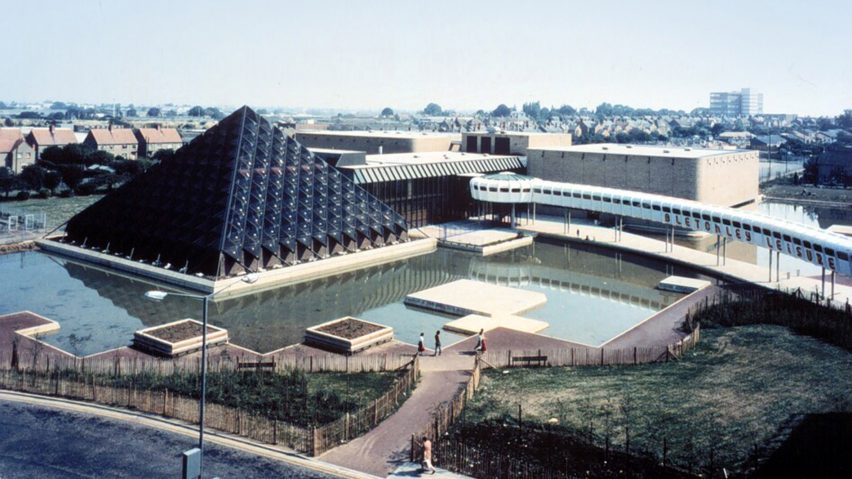
Ten of the UK's most "wildly varied and downright eccentric" leisure centres
As conservation group Twentieth Century Society launches a campaign to save the UK's under-threat leisure centres, we look at 10 of the country's most architecturally significant facilities.
The Twentieth Century Society has launched a campaign to list 10 leisure centres in the UK as the facilities, many of which were built in the 1970s and 80s, are increasingly under threat of closure and demolition.
"The boom era for leisure centres was really in the 1970s, when publically funded facilities were in abundance," explained Twentieth Century Society campaigns manager Oli Marshall.
"The decimation of local authority budgets in recent years has already forced many to close, with the challenges of the past few years only heightening the threat they now face."
"The Covid pandemic, global chlorine shortages and the cost-of-energy crisis have meant that every pool is now at risk," he told Dezeen. "If we don't move to protect the most historically important examples now, they may soon disappear altogether."
"Some of the most architecturally innovative structures of the late twentieth century"
According to Marshall, the UK's leisure centres represent some of the most varied and innovative architecture built in the 1970s and 80s.
"Space-age geodesic domes, glazed pyramids, castellated forts, brutalist elephants, Moorish postmodern palaces – is there any other building type that's as wildly varied and downright eccentric?" he said.
"They're also some of the most architecturally innovative structures of the late twentieth century; combining environmentally controlled environments with soaring engineering and playful pop imagery."
Launched today, 30 years after the society began a campaign to save UK's lidos, the Twentieth Century Society's campaign aims to protect the best examples of the typology before they are lost.
"Leisure centres are a building type that we've probably taken for granted and certainly one that hasn't yet been fully explored or appreciated," explained Marshall.
"Only a few years ago, art deco Lidos were being lost at an incredible rate. Yet the nation has fallen back in love with outdoor swimming and many of the best examples are now listed. In Britain's cold climate, the sub-tropical escapism of Leisure Centres is another unique part of our bathing culture that we should cherish."
To coincide with the campaign we have rounded up 10 of the UK's most significant leisure centres – three that have already been listed, five that the Twentieth Century Society is proposing to be listed and two that have already been lost:
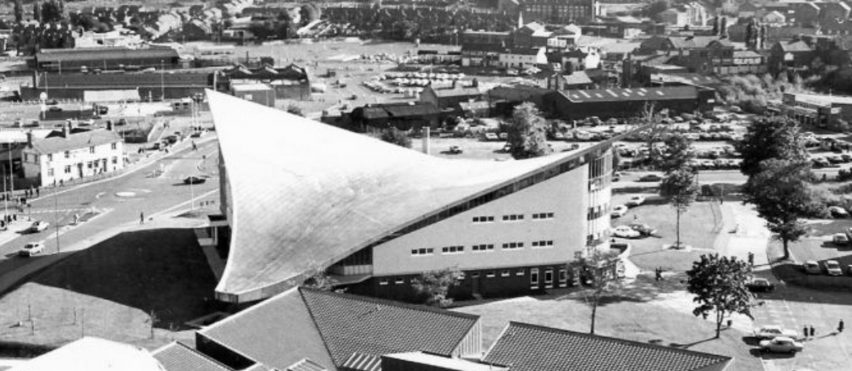
Wrexham Waterworld, by Williamson Partnership, Wrexham, 1967
Believed to be the only building with a hyperbolic paraboloid roof in Wales, the 1960s Wrexham Waterworld leisure centre currently operates as the Waterworld Leisure and Activity Centre.
Despite a failed listing bid in 2014 due to the interiors being greatly altered, the group believes that the building's distinctive roof warrants it being listed.
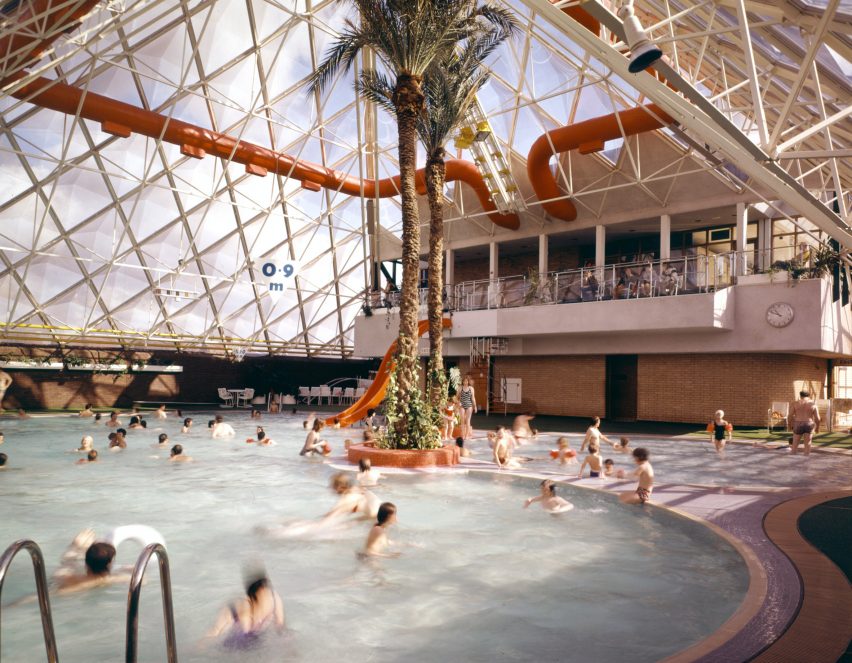
Bletchley Leisure Centre, by Faulkner Brown, Bletchley, 1974
Designed by UK studio Faulkner Brown in 1974, Bletchley Leisure Centre (pictured above and top) had its pool contained in a galvanised-steel, space frame pyramid.
Despite its extremely recognisable form, the building was demolished in 2010.
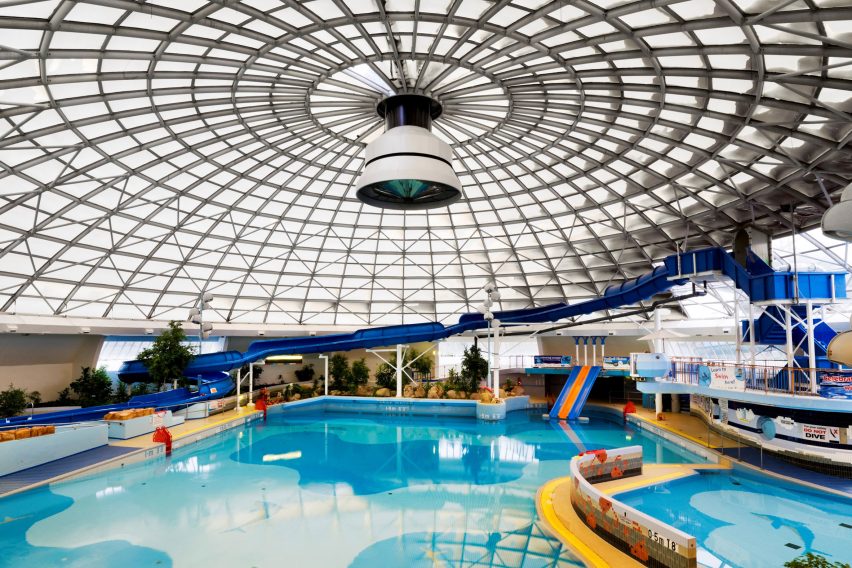
Swindon Oasis, by Gillinson Barnett and Partners, Swindon, 1976
One of the country's most recognisable leisure centres due to its large perspex-glazed roof dome, the pool closed in 2020 and was placed on the Twentieth Century Society's list of most at-risk buildings. However, following a campaign, it was Grade II listed in 2021.
Designed by Gillinson Barnett and Partners in the mid-1970s, the pool is perhaps best-known for informing the name of the band Oasis.
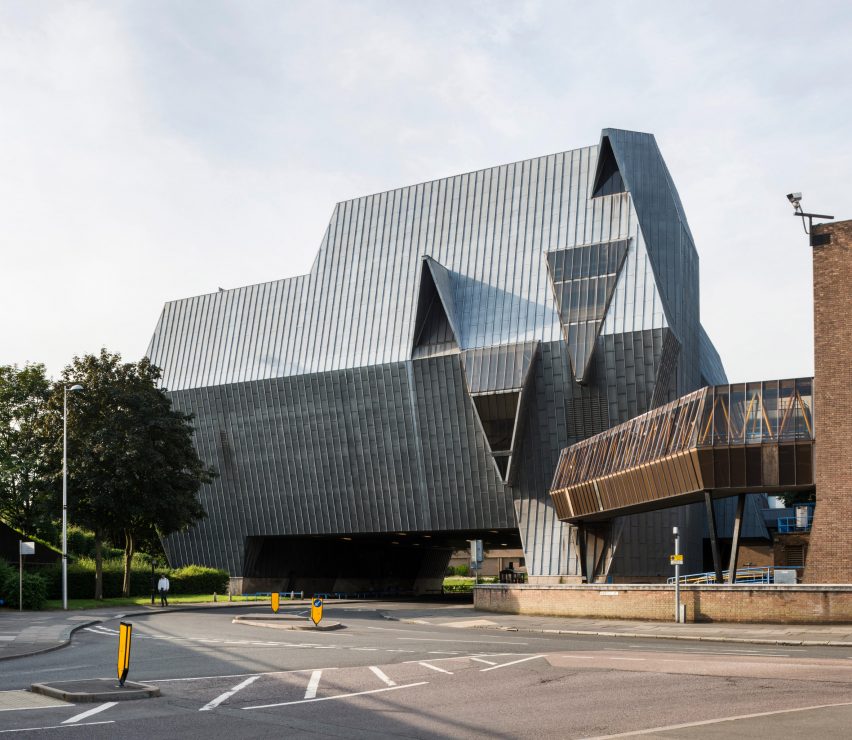
Coventry Sports Centre, by Coventry City Architect's department, Coventry, 1976
One of Coventry's most recognisable buildings, the Coventry Sports Centre is known as the Elephant due to its grey-zinc cladding and facade that resembles the animal. A glazed "trunk" connects the sports hall building with the 1960s Coventry Central Baths block.
The building is currently under threat following its closure in 2020.
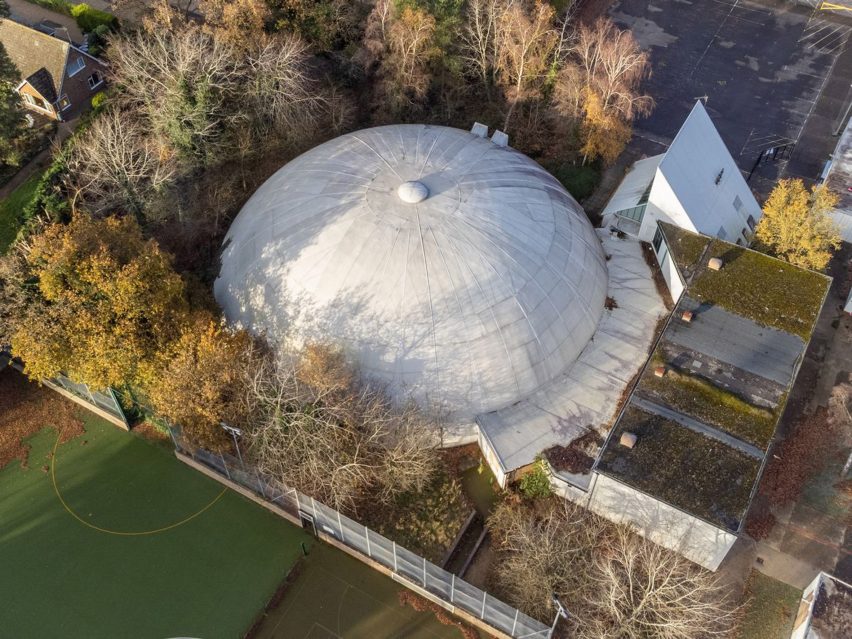
Mildenhall Dome, by Simon Conolly, Mildenhall, 1977
One of only three buildings in the UK built using the innovative Parashell system, the Mildenhall Dome was under threat of demolition after closing in 2021 before being Grade II listed.
The structure was built in one day using a system developed by Italian architect Dante Bini, where a balloon was inflated and covered in concrete to create the domed structure.
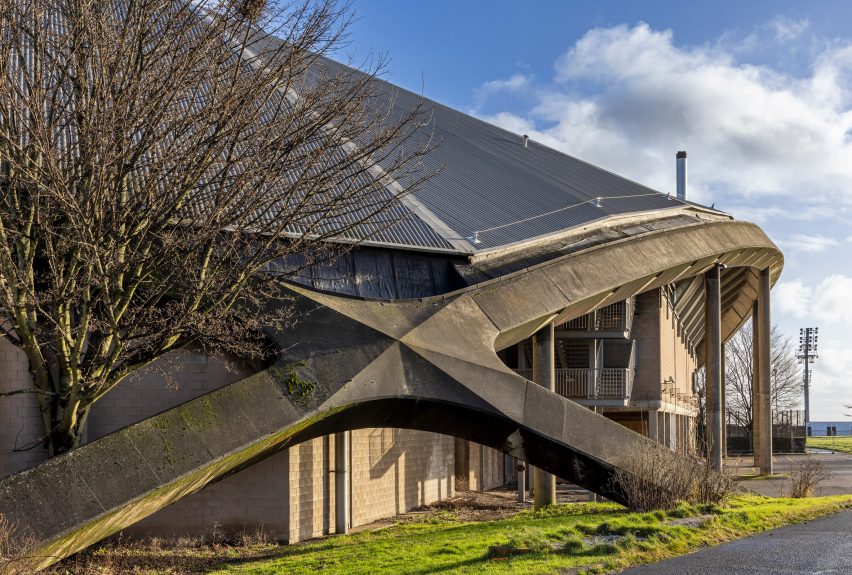
Richard Dunn Sports Centre, by Trevor Skempton, Bradford, 1978
Named after a local boxer who fought Muhammid Ali, the concrete Richard Dunn Sports Centre in Bradford was one of the UK's earliest buildings to have been designed using computers.
It was recently saved from demolition when it was listed earlier this year. In its listing citation, Historic England said the building was a "bold and accomplished design for a 1970s local leisure centre" and that "its striking big-top, lattice-girder roof is of particular note".
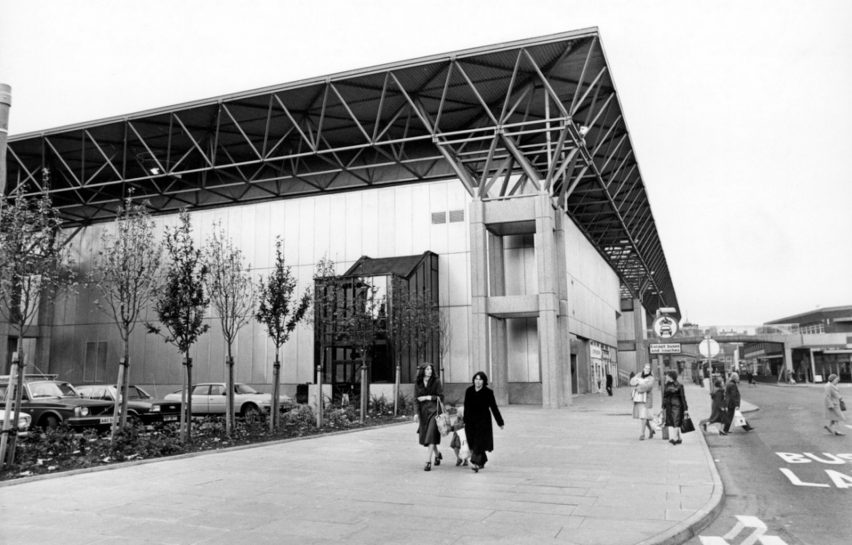
Crowtree Leisure Centre, by Gillinson Barnett and Partners, Sunderland, 1977
One of the most ambitious leisure centres built in the 1970s, the Crowtree Leisure Centre in central Sunderland was topped by a huge space-frame roof supported on square concrete columns.
The building was demolished in 2013. "Unfortunately, with this one, we were too late," said the Twentieth Century Society. "If it was still standing it would definitely be on the list for listing."
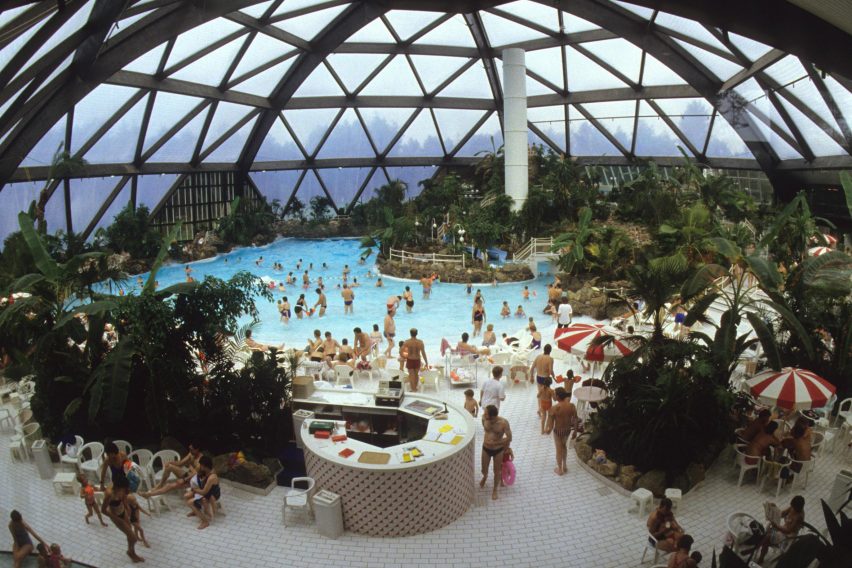
Center Parcs Dome, Center Parcs Architects, Sherwood, 1987
Built as the heart of holiday company Center Parcs' first location in the UK, the Subtropical Swimming Paradise building is enclosed by a geodesic dome with a 70-metre span.
The large dome was constructed from glued-laminated timber (glulam) that supports translucent ETFE panels.
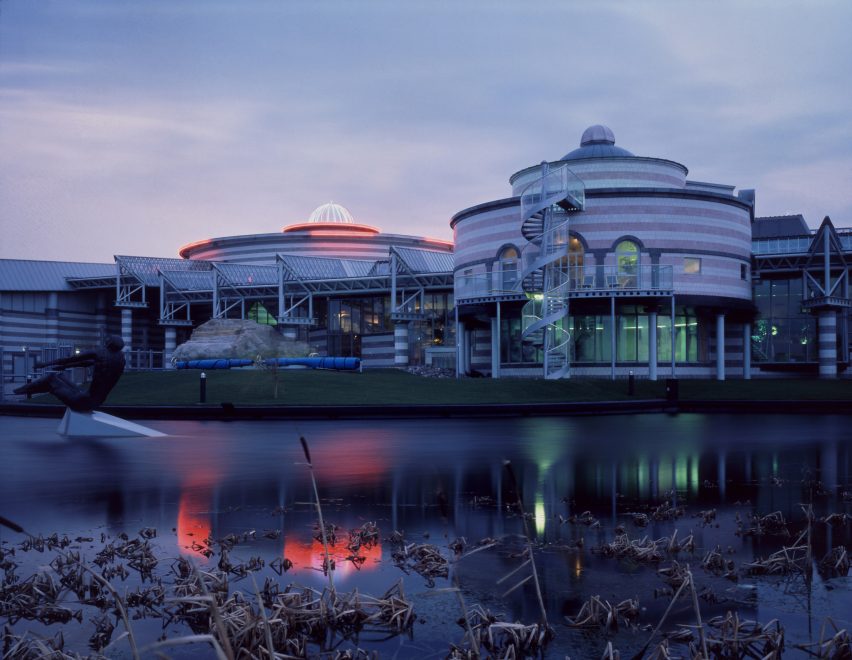
The Dome, by Faulkner-Brown, Doncaster, 1989
Dubbed a "mock Pantheon dedicated to the gods of leisure" the Dome in Doncaster features postmodern cupolas, pastel-banded stonework and decorative steelwork.
The building is one of five leisure centres designed by Faulkner Brown that the Twentieth Century Society has put forward for listing.
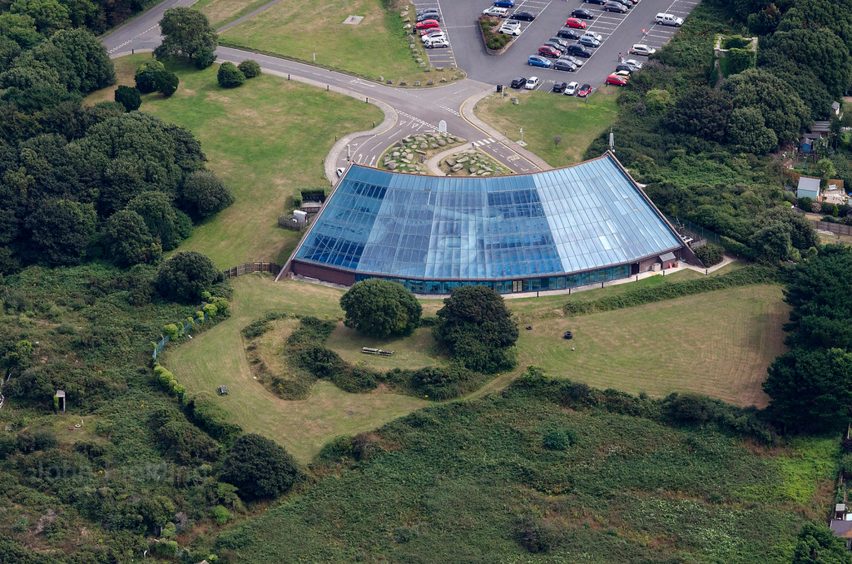
Ships and Castles Leisure Centre, by Andrew Robertson, Falmouth, 1993
Set above Falmouth harbour, the Ships and Castles Leisure Centre has two distinctive facades informed by its unique location.
Facing the car park, the building is made from castellated brickwork with six stout crenellated turrets that reference the nearby 16th-century Pendennis Castle, while the seaward facade was designed to be a "glazed sail" giving views of the harbour.